#Confederate monuments
Text
A federal lawsuit filed Tuesday seeks the removal of a Confederate monument marked as “in appreciation of our faithful slaves” from outside of a North Carolina county courthouse.
The Concerned Citizens of Tyrrell County, a civic group focused on issues facing local Black residents, and several of its members filed the lawsuit against the county’s commissioners. The legal complaint argues that the monument constitutes racially discriminatory government speech in violation of the 14th Amendment’s equal protection clause.
Tyrrell County includes a few thousand residents in eastern North Carolina. The monument, which was erected on the courthouse grounds in 1902, features a Confederate soldier standing atop a pedestal, with one of the markings below mentioning “faithful slaves.” The lawsuit argues that the monument conveys a racist and offensive message that Black people who were enslaved in the county preferred slavery to freedom.
“The point of putting such a monument near the door of the Tyrrell County Courthouse was to remind Black people that the county’s institutions saw their rightful place as one of subservience and obedience, and to suggest to them that they could not and would not get justice in the courts,” the lawsuit argues.
The Associated Press contacted the Tyrrell County manager via email requesting a comment on the lawsuit.
North Carolina legislators enacted a law in 2015 that limits when an “object of remembrance” such as a military monument can be relocated. Still, the lawsuit says more than a dozen Confederate monuments have been taken down in North Carolina in the past five years, many due to votes by local officials.
Others were removed by force. In 2018, protesters tore down a Confederate statue known as “Silent Sam” at the University of North Carolina campus at Chapel Hill. Statues of soldiers from the North Carolina Confederate Monument on the old Capitol grounds in Raleigh came down in June 2020. Gov. Roy Cooper, citing public safety, directed that the remainder of the monument and two others on Capitol grounds be removed.
Confederate monuments in North Carolina, as elsewhere nationwide, were a frequent focal point for racial inequality protests in the late 2010s, and particularly in 2020 following the murder of George Floyd by a Minneapolis police officer.
The Concerned Citizens of Tyrrell County wrote that they have fought for the courthouse monument’s removal for years, from testifying at county commission meetings to advertising on billboards.
#us politics#news#associated press#north carolina#2024#Confederate monuments#fuck the confederacy#confederate states of america#american civil war#Concerned Citizens of Tyrrell County#14th Amendment#Tyrrell County#Tyrrell County Courthouse
54 notes
·
View notes
Text
66 notes
·
View notes
Text
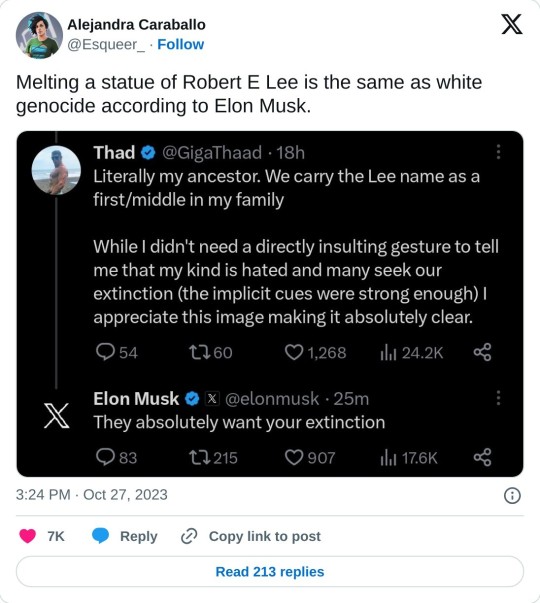
#us politics#republicans#conservatives#tweet#twitter#x#@esqueer_#alejandra caraballo#robert e. lee#confederate states of america#fuck the confederates#confederate pride#fuck the confederacy#confederate monuments#elon musk#fuck billionaires#eat the rich#2023
73 notes
·
View notes
Text
"Confederate monuments bear what the anthropological theorist Michael Taussig would call a public secret: something that is privately known but collectively denied. It does no good to simply reveal the secret — in this case, to tell people that most of the Confederate monuments were erected not at the end of the Civil War, to honor those who fought, but at the height of Jim Crow, to entrench a system of racial hierarchy. That’s already part of their appeal. Dr. Taussig has argued that public secrets don’t lose their power unless they are transformed in a manner that does justice to the scale of the secret. He compares the process to desecration. How can you expect people to stop believing in their gods without providing some other way of making sense of this world and our future?
Swords Into Plowshares might have been the first to propose melting, but other communities are working out their own creative visions for Lee’s afterlife. One of the biggest changes so far has been at Arlington House, the historic plantation mansion at the center of Arlington National Cemetery, which is the official national Robert E. Lee Memorial. In 2021, Arlington House reopened with displays not only about Lee’s family, who lived there after they inherited it from Lee’s father-in-law, but also about the lives of the families enslaved there. Even Lee’s burial site at Washington and Lee University in Lexington, Va. — where he served as president after the war — has changed. The university decided to focus on Lee the civilian rather than Lee the general, for example by moving a prominent portrait of him in uniform. And it constructed a wall to enclose the large sculpture of Lee that once claimed an insistent place in the university’s chapel.
Covering this story over the past few years, I’ve come to realize two things. First, when a monument disappears without a ceremony to mark why it is coming down, a community has no chance to recognize that it has itself changed. (Ideally the ceremony is public, but because of safety concerns, the melting I attended was not.) Second, if you are outraged that something’s happening to your community’s heroic statue of Lee, you’re not going to be any less outraged if the statue is moved to some hidden storeroom than if it’s thrown into a landfill. So if all changes, large or small, will be resisted, why not go for the ones with the most symbolic resonance?
That’s why the idea to melt Lee down, as violent as it might initially seem, struck me as so apt. Confederate monuments went up with rich, emotional ceremonies that created historical memory and solidified group identity. The way we remove them should be just as emotional, striking and memorable. Instead of quietly tucking statues away, we can use monuments one final time to bind ourselves together into new communities.
...
When the remaining legal barriers were cleared (including a last-minute lawsuit that sought to have the statue reassembled), Lee was finally ready to surrender to the furnace. The foundryman turned on the propane supply and laid Lee’s sword across the hole in the lid. He told the spectators that the metal had to get hot enough to release any moisture before he maneuvered it down through the hole into the crucible.
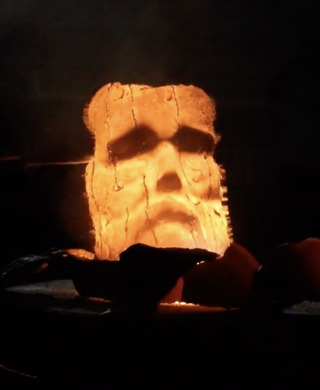
When he did, its blade stuck up out of the furnace for a moment, then melted down “like a stick of butter,” as Dr. Schmidt put it.
Lee’s face was the last piece to go into the crucible. Given how often the monument and its ideals were celebrated with flames — from Klansmen’s torches to the tiki torches of white nationalists in 2017 — it seemed fitting for flames to close over the monument.
...
Dr. Douglas, Swords Into Plowshares’ other co-founder, apologized that the ceremony could not be public. She thanked those in attendance, telling us we were witnessing it on behalf of Charlottesville’s residents, including those long gone who lived under slavery. Someday, she said, when we think of Civil War heroes, we will imagine not Lee but, instead, those who fought for their freedom against him.
The man in the protective visor dropped the red-hot piece of metal that once represented Lee on the ground. It fell to pieces, which he fed into the crucible. A line of cameras faced him, making new images of history as the old image finally disappeared in flames.
- Erin Thompson, "The Most Controversial Statue in America Surrenders to the Furnace." New York Times. October 24, 2023. Photo by Eze Amos.
#swords into plougshares#confederate monuments#robert e. lee#tear them down#historical monuments#american civil war#historical memory#united states history#united states politics
14 notes
·
View notes
Text
Because Of Course.
5 notes
·
View notes
Text
"We are literally living the history that might be hidden from our children in the future." That line hit me so hard I had to share this everywhere! A brief history of why history is taught how it is in the United States
#us history#slavery#education#racism#confederate monuments#states rights#black people#white people#politics#black lives matter#black men#Florida#ron desantis#civil war
19 notes
·
View notes
Text
Atlanta removing ‘Lion of the Confederacy’ statue from historic Oakland Cemetery
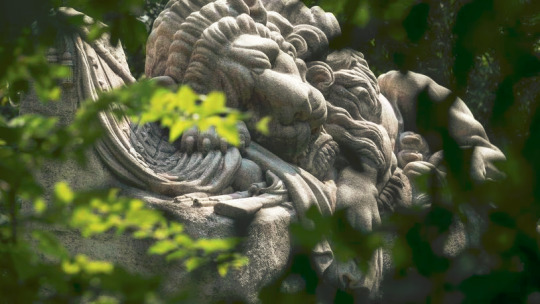
The city of Atlanta is set to remove a 127-year-old Confederate monument from Oakland Cemetery after it has repeatedly attracted vandals wielding sledgehammers and spray paint cans.
The City Council passed a resolution Monday evening declaring that the city should remove the “Lion of the Confederacy” monument and place it in temporary storage. The removal could happen as soon as this week, according to a member of City Council.
In recent years the statue has been defaced with graffiti, red latex and hit with objects like a pickaxe and sledgehammer.
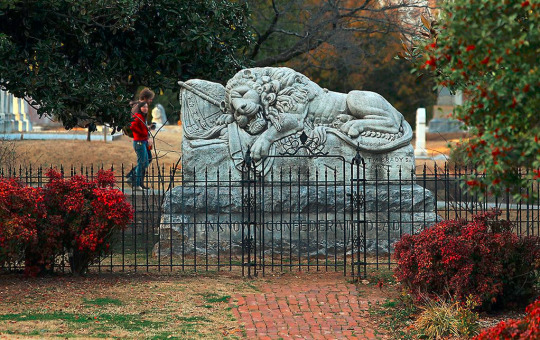
The statue was built by T.M. Brady and dedicated on Confederate Memorial Day in 1894 to honor the 3,000 unknown Confederate dead resting in Oakland Cemetery. The statue depicts a wounded or dead lion with its right paw resting on a cannonball partially concealed by Confederate flag.
The lion’s removal follows years of discussion among city leaders about how to address contentious Confederate iconography in Atlanta. In 2017, then-mayor Kasim Reed signed off on a 40-page report written by an 11-member panel that included recommendations related to Confederate symbols in the city.ExplorePhotos: Confederate memorials in metro Atlanta
Among the recommendations was the renaming of Confederate Avenue in the Grant Park and Ormewood Park neighborhoods to United Avenue, and attaching contextual markers to monuments like the Lion of the Confederacy and a 65-foot-tall Confederate obelisk also located inside Oakland Cemetery.
What sets both objects apart from Confederate monuments that sit in front of courthouses, state capitols or on city streets is that they are not “in your face,” but are part of the statuary of the cemetery, said Sheffield Hale, president and CEO of the Atlanta History Center.
Carved from Georgia marble, the lion is modeled after the Lion of Lucerne in Lucerne, Switzerland — an 1821 sculpture memorializing the Swiss guards massacred during the French revolution. The 30-foot-long Swiss sculpture is carved into the face of a low cliff, and is considerably larger than the Oakland version.
Atlanta City Council member Carla Smith, a sponsor of the legislation to remove the lion, led the panel established by Reed and was a major force behind the contextual markers.
While the committee never recommended the removal of the lion, vandals have left the city little choice but to move it to an undisclosed location, Smith said.

“They’ve smashed the face, the nose is completely missing and the cost of trying restore it is becoming too much,” Smith said.
“There’s been this constant vandalism and constant drain on city resources trying to protect and restore it,” said Councilwoman Natalyn Archibong, whose district includes Oakland Cemetery.
Richard Harker, executive director of the Historic Oakland Foundation, said that since October 2019, the marker had been vandalized at least eight times and that the interpretive signage below the statue, including the contextual marker, had been defaced repeatedly, sometimes in broad daylight. City employees have spent 150 hours rehabbing the statue after instances of vandalism.
Harker said six permanent security cameras had recently been installed in the park, including a couple aimed directly at the lion. Extra security guards had been hired in the last several months to deter vandals.
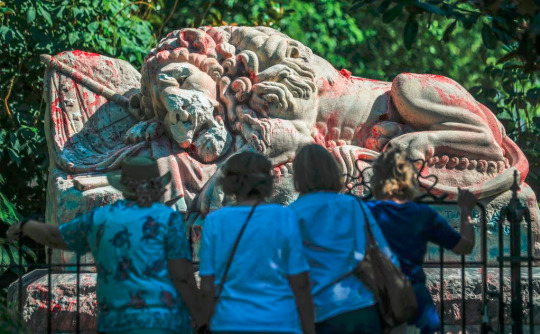
“The city’s history is good, bad, ugly and beautiful, and the city has to wrestle with all those legacies so we can move forward,” Harker said. “This is another example of the city, in a sad, unfortunate way, of doing so.”
The City Council approved a $33,000 contract with Superior Rigging and Erecting Co. to remove the lion statue. The city has not said where it will be located long-term.
The Confederate statue is listed by the Smithsonian as a historically significant piece of funerary art, Hale said, but removing it is a matter of public safety as well as preservation.
Hale also mentioned that the tension associated with the sculpture could lead to violence “adjacent” to the statue.
In the years since the city’s report on Confederate iconography came out, local governments around the state and nation have taken steps to remove monuments that glorify the Confederacy amid widespread protests against racism. The Georgia state law that makes it difficult for local governments to relocate or remove Confederate monuments was also updated in 2019 to include language that allows for “appropriate measures for the preservation, protection and interpretation” of monuments.
The Confederate obelisk in downtown Decatur came down last June. A Confederate monument built in 1993 in Lawrenceville’s downtown square was removed earlier this year.
#Atlanta to remove ‘Lion of the Confederacy’ statue from Oakland Cemetery#lion of the confederacy#atlanta#confederacy#confederate monuments
4 notes
·
View notes
Text

Omitted from the current display is the fact that Helen Plane, who oversaw the Atlanta chapter of the United Daughters of the Confederacy and helped launch the idea of a Confederate monument at Stone Mountain, had once written to the project’s original designer, Gutzon Borglum (who later went on to carve Mt. Rushmore), to encourage him to include Klansmen in the carving — an idea inspired by “The Birth of a Nation.”
“Since seeing this wonderful and beautiful picture of Reconstruction in the South,” she wrote, “I feel that it is due to the Ku Klux Klan which saved us from Negro domination and carpet-bag rule, that it be immortalized on Stone Mountain. Why not represent a small group of them in their nightly uniform approaching in the distance?”
I write about a new doc that digs into the history of Stone Mountain. Find it here.
Photo by me.
10 notes
·
View notes
Text
Authorities have released civil rights attorney Jill Collen Jefferson from jail in Holmes County after Lexington Police arrested her on Saturday, June 10, while she was filming a traffic stop she saw after leaving an event. Police arrested the JULIAN president nine days after she complained about the department’s treatment of Black residents while meeting with U.S. Justice Department officials.
Jefferson’s attorney, Michael Carr, who said he “is very concerned (Lexington Police) engaged in a false arrest in this case,” informed the Mississippi Free Press this morning that she was being released. Bail bondsman Bonita Streeter also confirmed the release, saying officials had waived fees for the civil rights attorney’s release.
Jefferson, who is from Jones County, founded JULIAN in 2020. She named the organization, which conducts investigations into possible civil rights violations, after her mentor, longtime civil rights leader Julian Bond.
The arrest sparked a backlash from the community over the weekend.
“The citizens of Lexington are fearful of driving for fear of harassment from the police,” the Mississippi Freedom Democratic Party said in a statement this morning condemning Collen’s arrest. “Innocent mentally ill citizens are brutalized on our streets and imprisoned unlawfully. Our elected officials have refused to act on this matter because these unlawful arrests are benefitting the city financially.”
‘I Guess She Thought That Was A Good Idea’
Assistant U.S. Attorney General Kristen Clarke, who is with the U.S. Justice Department’s Civil Rights Division, visited Lexington on June 1 along with U.S. Attorney Darren J. LaMarca of the Southern District of Mississippi.

The Mississippi Freedom Democratic Party said its members “were feeling hopeful” after Clarke and LaMarca’s visit—until Jill Collen Jefferson’s arrest.
“Upon leaving an event, she witnessed police officers engaging with a citizen, but because of the numerous complaints against the police department, she decided to drive by the scene and record,” MFDP said. “While driving, an officer asked her to show her driver’s license Other officers approached the vehicle and began to pull her out. She was placed in handcuffs and put in the patrol car.”
Attorney Carr said police charged Jefferson with three misdemeanors, including failure to comply, disorderly conduct and resisting arrest. But he told the Mississippi Free Press this morning that the police department had offered no “narrative supplement” to explain why they charged her with those offenses.
After this story first published, though, Carr shared a recording with the Mississippi Free Press that his office obtained that he says includes remarks the arresting officer made about Jefferson. This reporter could not verify the identity of the person speaking in the recording, however.
“I told her to give me her license five, six, seven, eight times,” a man can be heard saying on the recording. “She argued she ain’t got to. … She was riding by filming. I guess she thought that was a good idea.”
The Mississippi Free Press reached out to the Lexington Police Department for comment this morning, but an employee said there was “no one here right now to speak about that matter” and to call back later. Reached again this afternoon following this story’s initial publication, the department again said no one was available to speak.
Jefferson Speaks: ‘I Did Not Resist’
Later this afternoon, attorney Carr sent this reporter a video of Jill Jefferson speaking with members of the media in Lexington, where she accused the local police of “terrorizing Black people here.”
She said she was driving around with a passenger when she saw the police had someone pulled over and decided to film the incident. The passenger, she said, got out of the car, fearing the police would pull Jefferson over for filming them.
“As soon as the cops saw me, Officer Scott Walters started flagging me down with his flashlight,” Jefferson told reporters. “I stopped, I let my window down, and he said, ‘Show me your ID.’ I said, ‘Why do you need to see my ID?’ … And then he pulled out his taser. And I said, ‘You’re going to tase me?’ And that point, I called my attorney. He said, ‘Jill, of course this is not right, but just show them your ID so you can get this over with.'”
Jefferson said she followed her lawyer’s suggestion, but the situation only escalated from there.
“I held up my license. At that point, Officer Walters snatched my phone out of my hand, he slammed it on the top of the car,” she said. “He started trying to yank at my door handle, trying to pull it open. My car door was locked. He reached through the window and unlocked my car door through the inside. He pulled the door open, pulled me out of the car, pushed me against the car, and then proceeded to arrest me—cuff me. He put my hands behind my back. I did not resist.”
Jefferson said that, after the officer put her in the back of a police car, Jefferson said another officer joined Walters searching her car.
“Then they went to the driver’s side and Officer Walters knelt down and put his hand under the seat and he said, ‘Oh, looky here.’ He’d found my firearm,” she said. “And he said, ‘I sure hope it’s stolen.’ At that point, he came back to the police car. I told him the search was illegal. He told me he would never hire me. He told me I was a shit lawyer since I didn’t know about search incident to arrest. He told me I was being arrested for failure to comply. I told him I had not done anything wrong. He said nothing and shut the car door. He took me to the police station.”
‘It’s Actually Beyond A Breaking Point’

A month later, JULIAN filed a lawsuit against the Lexington Police Department, alleging that it “operates within a culture of corruption and lawlessness, daily and habitually subjecting Black citizens to harassment and brutality, in violation of their civil rights.”
“We are just asking the court to restrain them from targeting, harassing, assaulting Black citizens and violating their constitutional rights in other ways,” Jill Collen Jefferson told the Mississippi Free Press last year. “It’s at a breaking point—it’s actually beyond a breaking point.”
Carr said Jefferson’s court date is set for July 13 at the Lexington Municipal Court.
Lexington is 86% Black and 13% white, but has a deeply racist past. At the dedication of a Confederate monument there in 1908, Confederate veteran Wiley N. Nash said that “these Confederate monuments, these sacred memorials, tells in silent but potent language, that the white people of the South shall rule and govern the Southern states forever.”
The monument still stands at the center of Lexington’s town square.
This story has been updated to add comments from Jefferson after her release.

#Jill Jefferson#Jill Collen Jefferson#Mississippi#white supremacy#white cops#racism#white people in the south#Lexington Releases Civil Rights Lawyer Arrested Filming Officers#white hate#confederate monuments
6 notes
·
View notes
Link
Various justifications have been advanced by those removing or destroying Confederate monuments to explain why they deem it necessary to dismantle the Confederate heritage. For example, the memorial to Zebulon Vance in Asheville, North Carolina was demolished on grounds that it was “a painful symbol of racism.” In the tumult surrounding the Black Lives Matter riots, “168 Confederate symbols were removed across the United States.” In 2020 the Mississippi flag was changed to replace the Confederate “stars and bars” with a new symbol of a magnolia flower: [Governor Tate Reeves] signed into law a measure that removes the flag that has flown over the state for 126 … Continue reading →
0 notes
Text
The Week in Confederate Heritage
The American Civil War was fought by the United States of America and the Confederate States of America, 11 southern states that left the Union in a conflict over slavery. Lee became overall commander of the Confederate States Army. Bob Karp/ZUMA Press Wire/dpa
We begin with this article out of Florida. “Confederate monuments have come down in Orlando, Tampa and most recently Jacksonville as…
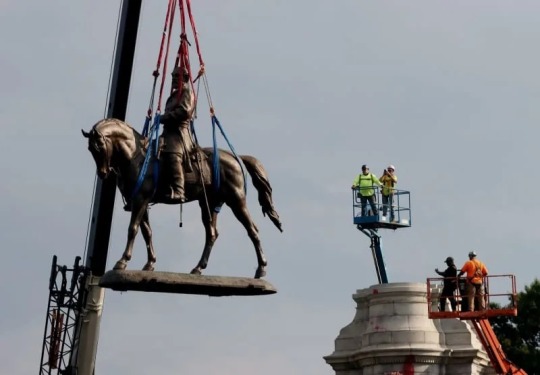
View On WordPress
0 notes
Text
60 notes
·
View notes
Text
RFK Jr. is taking the side of Confederate statue worshipers. He really doesn't like the removal of monuments to a treasonous and pro-slavery entity called the Confederate States of America.
Robert F. Kennedy Jr. denounced the removal of hundreds of Confederate statues and other monuments across the United States after the murder of George Floyd by a Minneapolis police officer in 2020.
In a podcast interview that aired live on Friday from the Libertarian National Convention in Washington, Mr. Kennedy, an independent candidate for president, portrayed the removal of statues honoring the Confederacy as “destroying history,” echoing similar comments made by former President Donald J. Trump in support of the monuments.
[ ... ]
Statues and other monuments glorifying the Confederacy were erected — most at the height of the Jim Crow era — as part of a movement to advance the Lost Cause myth, which in various iterations depicted the Confederacy’s rebellion as a noble defense of Southern values or falsely asserted that the Civil War was fought over “states’ rights,” not slavery. Many of the monuments also distort history by portraying Black Americans as loyal to white Southerners in their enslavement.
This puts RFK Jr. on the same side as Donald Trump.
Trump equated their removal to “changing history” when he defended some participants of a violent white supremacist rally in Charlottesville, Va., in 2017, who had gathered to protect the statue of Lee that was later removed. Mr. Trump later resisted efforts to rename nine southern Army bases that had been named for treasonous Confederate generals who fought against the U.S. Army.
President Biden has taken the opposite view, saying that such monuments have no place in 21st century America. Biden is the only candidate who stands against traitorous racists.
As a candidate in 2020, President Biden supported the removal of Confederate statues, as well as the renaming of the Army bases, which was ultimately carried out during his administration.
By coincidence, today (May 29th) is the birthday of the late President John F. Kennedy. JFK would be ashamed of his idiotic anti-vax, pro-Confederate nephew.
In 1963 President Kennedy federalized the Alabama National Guard to assist in the integration of the University of Alabama – the last segregated state university in the US. Alabama's segregationist Gov. George Wallace physically stood in the door to block two black students but gave way when confronted by the federalized National Guard.
youtube
That evening, on 11 June 1963, the president addressed the country on the topic of civil rights. Here is how historians now view the events surrounding that day.
youtube
Gov. Wallace went on to run as a third party candidate in the 1968 presidential election. Of course he didn't win but his presence in the election helped to elect Richard Nixon who gave the US the Watergate scandal and the invasion of Cambodia.
RFK Jr. is a lot more in the tradition of George Wallace than John F. Kennedy. Don't be fooled by RFK Jr.'s family name; most of his siblings and cousins have denounced him and declared their support for the Biden-Harris ticket in 2024.
#rfk jr.#glorifying the confederacy#defending traitors#confederate statues#jim crow era monuments#the lost cause#donald trump#very fine people#civil rights#university of alabama#segregation#george wallace#third parties#john f. kennedy#election 2024#vote blue no matter who
3 notes
·
View notes
Text


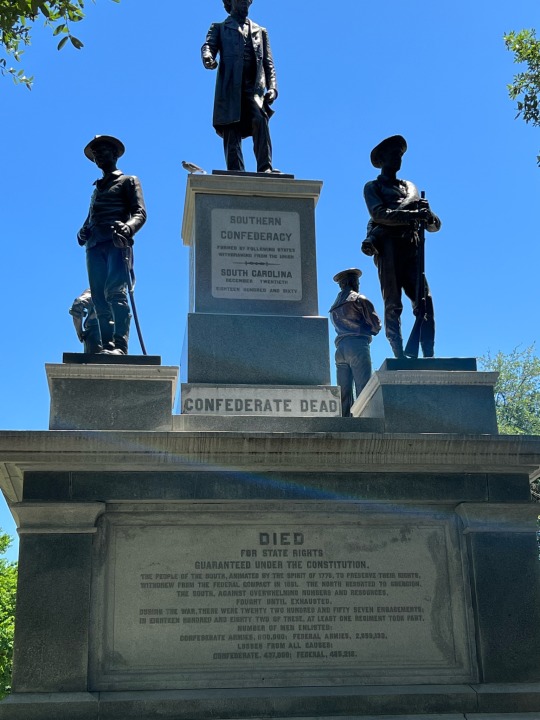


I was very impressed with my Southern Brethren in TX. God bless y’all this beautiful Texas day.

20 notes
·
View notes
Link
2 notes
·
View notes
Text
#OTD in 1862 – The Irish Brigade suffered over 60% casualties at the Battle of Antietam at an area that came to be known as Bloody Lane.
At the Battle of Antietam, the Irish Brigade led its division in attacking the infamous Bloody Lane. In preparation for the deadly work ahead, Father William Corby, one of the brigade’s chaplains and future president of Notre Dame, rode down the firing line and administered a general rite of absolution to the men.
Thomas Meagher advanced to the crest of a hill overlooking a brigade of North…
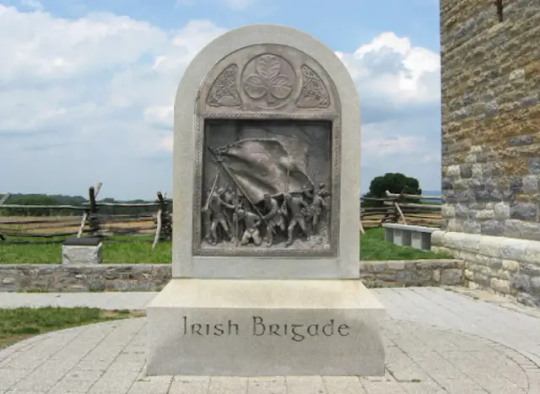
View On WordPress
#69th New York Militia#American Civil War#Bloody Lane#Captain McGee#Confederates#Father William Corby#Fighting 69th#Gen. Israel Richardson#The Battle of Antietam#The Battle of Antietam Monument#The Irish Brigade#Thomas Meagher#Unions
9 notes
·
View notes